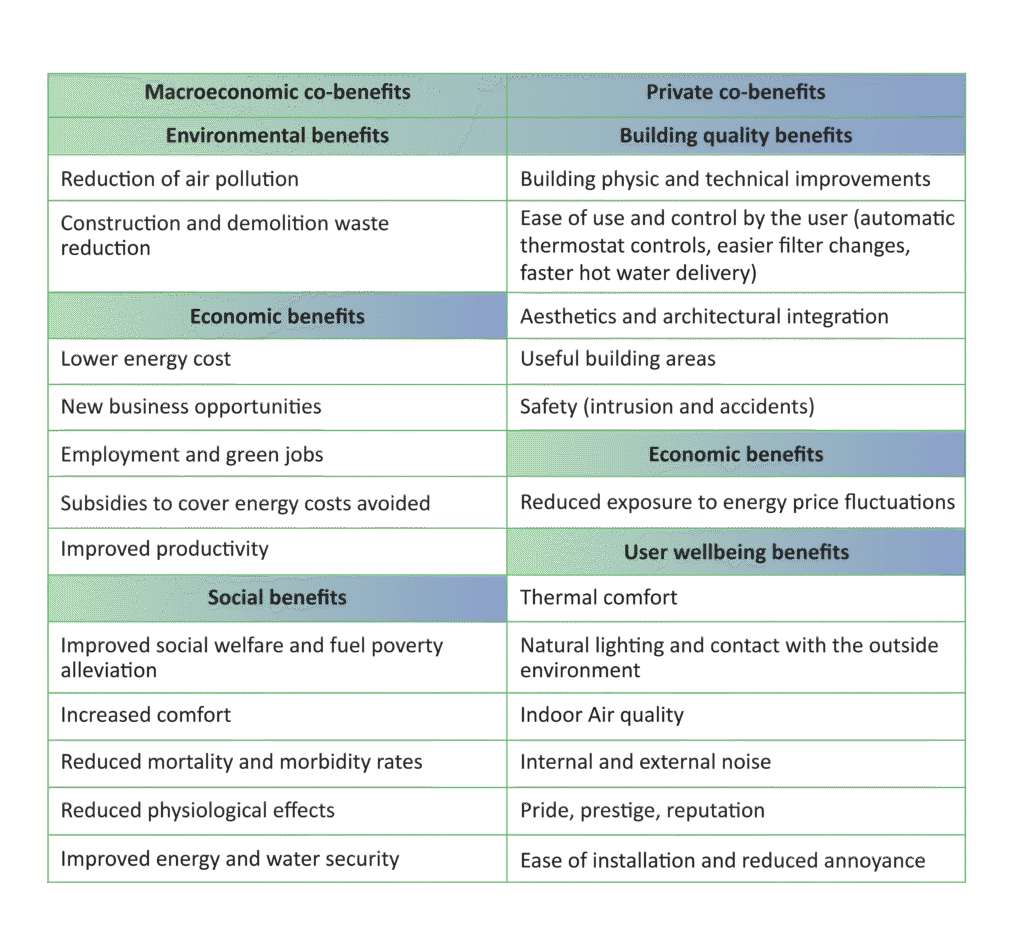Buildings and Environment
Decarbonizing the building and construction sector is a major challenge worldwide, including Central Asia countries. Building sector have a significant influence on energy consumption, economic growth, human health and environment. Building sector is crucial for both economic progress and sustainability. Buildings account for 30% of the world’s final energy consumption, making energy efficiency in construction and building operations a top priority for reducing overall energy demand. The building sector contributes 26% of global greenhouse gas emissions, emphasizing the need for decarbonization efforts to mitigate climate change impacts. Approximately 45% of materials utilized worldwide are directed toward construction activities. Sustainable material choices and waste reduction strategies are essential for minimizing environmental degradation. The construction industry is responsible for 36% of overall waste generation, highlighting the necessity for improved waste management and recycling practices in the sector. As well significant time is spent indoors – humans spent approximately 80% of their time indoors which affects health and quality of life. Buildings are a significant source of air pollution, primarily due to the energy required for heating, cooling, and electricity, much of which is still generated from fossil fuels, particularly coal. Burning fossil fuels for energy releases harmful pollutants into the air, contributing to smog, respiratory issues, and other health problems.
In European Union (EU) buildings are responsible for 43% of the total final energy consumption and 36% of energy-related greenhouse gas (GHG) emissions. Therefor in EU by 2030, all new buildings will be required to be zero-emission, with new public buildings needing to meet this standard by 2028.
The concept of sustainable building plays a key role in addressing many of those challenges. While specific sustainable building certification systems may vary in their criteria and emphasize different aspects depending on regional contexts and impacts, they are generally built upon a shared set of core principles. Sustainable buildings are designed and constructed based on several key pillars that ensure environmental, social, and economic sustainability. According to the EU initiative Level’s sustainable building is based on six macro-objectives, see Figure 1.[1]
 Figure 1: Six Macro-Objectives for Sustainable Buildings
Figure 1: Six Macro-Objectives for Sustainable Buildings
Those six key pillars address key sustainability aspects over the building life cycle:
- Greenhouse gas emissions along a buildings life cycle: Minimise the whole life carbon output, considering both energy consumption during the use phase of the building and embodied energy.
- Resource efficient and circular material life cycles: Optimise the building design to support lean and circular flows.
- Efficient use of water resources: Use water efficiently, particularly in areas of identified long-term or projected water stress.
- Healthy and comfortable spaces: Create buildings that are comfortable, attractive and productive, focusing on four aspects of quality in the indoor environment.
- Adaption and resilience to climate change: Futureproof building performance against a changing climate and extreme weather.
- Optimised life cycle cost and value: Take a long-term view of the whole life costs and market value to deliver more sustainable buildings.
Building sector challenges have driven the development of comprehensive green building standards, certifications, and rating systems. These initiatives are specifically designed to minimize the negative environmental impacts of buildings by promoting sustainable design principles. By incorporating energy efficiency, resource conservation, and eco-friendly materials, these frameworks aim to create buildings that reduce their carbon footprint and contribute positively to the health and well-being of occupants and the surrounding environment. This holistic approach ensures that buildings are more resilient, cost-effective, and environmentally responsible, ultimately supporting global efforts to combat climate change and preserve natural resources. Many studies have identified multiple benefits association with sustainable and energy efficient buildings. The macroeconomic and private co-benefits are listed in Table 3.[2]
Table 3: Macroeconomic and private benefits
 These benefits not only enhance the quality and performance of buildings but also contribute to broader goals such as improved health, increased productivity for learning and research work, and economic growth.
These benefits not only enhance the quality and performance of buildings but also contribute to broader goals such as improved health, increased productivity for learning and research work, and economic growth.
[1] Level(s)
[2] Impact of co-benefits on the assessment of energy related building renovation with a nearly-zero energy target